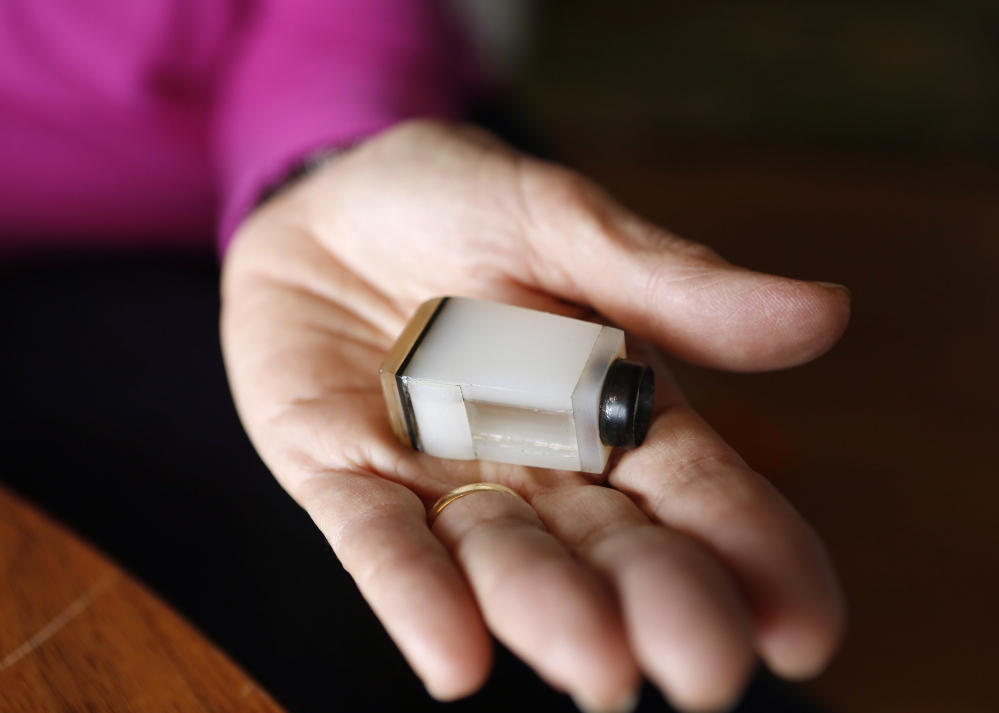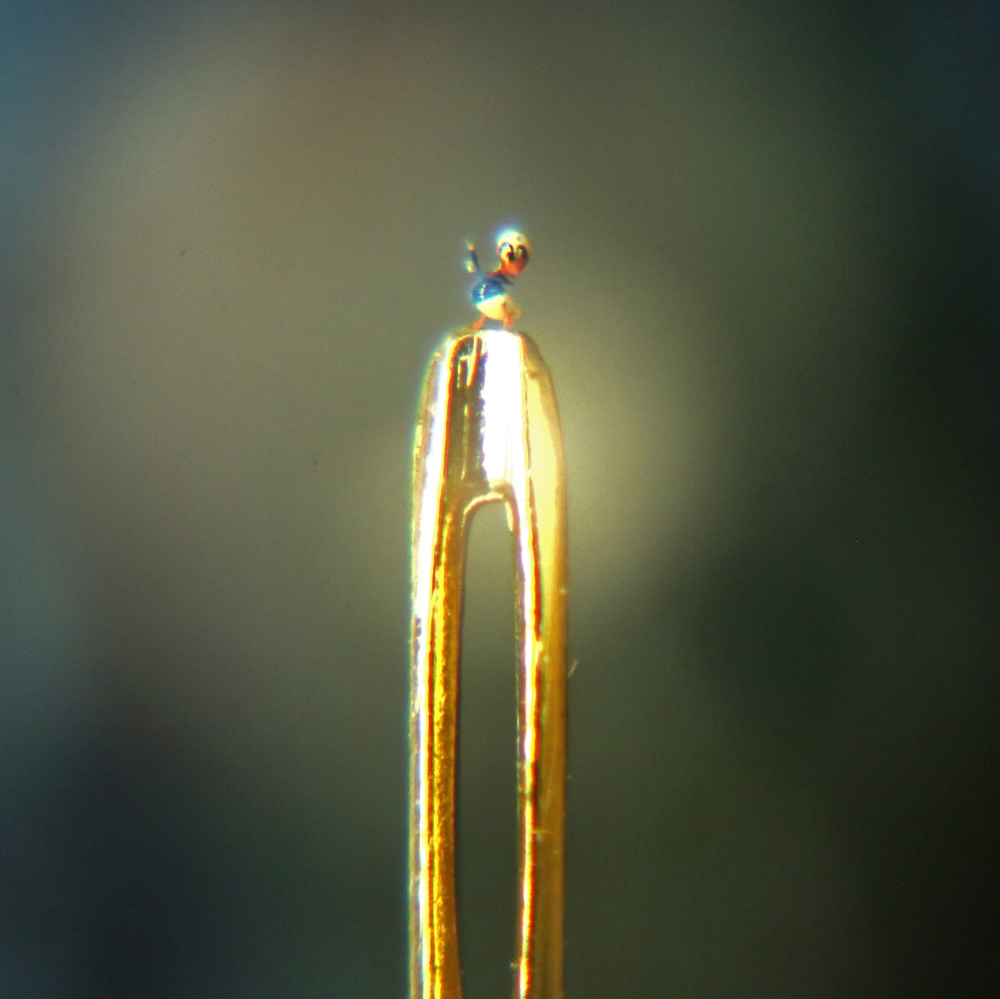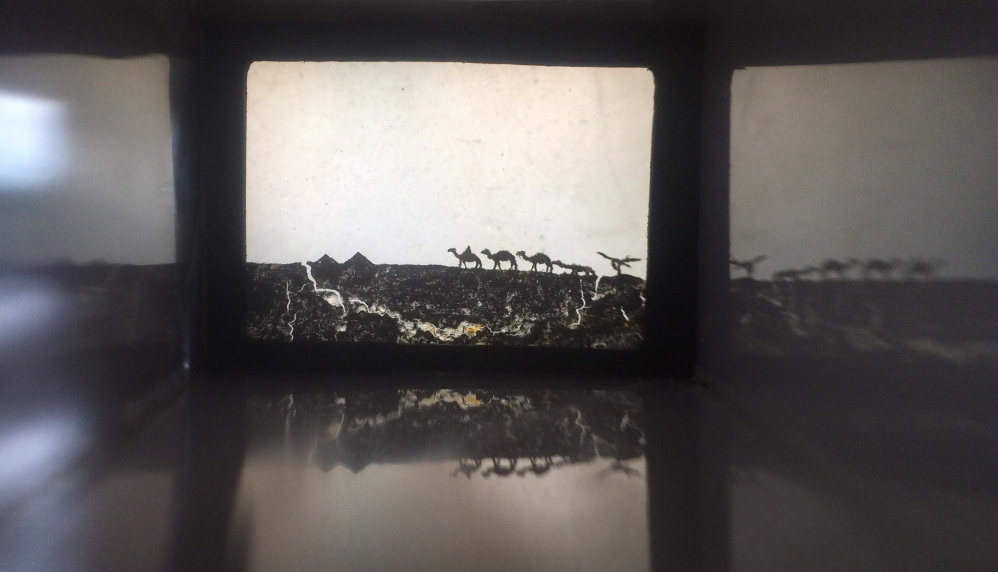How much money would you pay for art you can’t even see?
A Portland art dealer hopes to get an answer to that question this week. Among the artworks available at the spring sale of Barridoff Galleries are two microminiature sculptures, each carved on material smaller than a grain of rice and visible only under magnification. One, carved by Armenian artist Edward Kazarian, depicts camels walking through the desert toward distant pyramids. The other, by his student Hagop Sandaldjian, shows the Walt Disney character Donald Duck.
The sale is Wednesday at Maine College of Art, and Barridoff owner Rob Elowitch has no idea what to expect. He and his wife, Annette, have spent decades selling paintings and sculptures, many by artists with ties to Maine. They’ve never handled microminiatures before. He’s estimating the rice-size Kazarian camel sculpture might sell for as much as $12,000. The Sandaldjian might fetch half that amount, he guessed.
Elowitch has few comparisons or expectations. Pieces like this don’t often come up for auction, and the recent auction history is too spotty to offer an indication of what to expect, he said. Kazarian died in 2012, and it often takes several years after an artist’s death for the market to reflect true value. Given the lack of familiarity with the artist or the art form, he’s being cautious. “We have no idea,” he said. “Everybody is curious, but nobody has said, ‘I’m going to bid on that.’ Who would bid on something without seeing it?”
One thing he knows is that these tiny sculptures have generated buzz. People are curious, and after they see the sculptures – particularly the camels – they’re amazed.
The first question people ask is how, Annette Elowitch said. “And then they say, ‘Why?’ What motivated this guy to do it so painstakingly? He is pushing the envelope of life.”
The pieces are encased in glass, and can be seen only by holding the magnified glass case up to the eye.
Kazarian is considered the founder of microminiature art. He died at age 89. He also was a professional musician, who began his eye-of-a-needle carving in the late 1940s.
Sandaldjian, who died in 1990, was his student. Their work is in museum collections on both sides of the Atlantic.
The two sculptures came to Barridoff by a grandson of Sandaldjian, who lives in California.
They are among the highlights of the twice-a-year Barridoff auction. The spring sale also includes paintings by William and Marguerite Zorach, Thomas Crotty, Reuben Tam, Frances Kornbluth and others.
The sale begins at 6 p.m. Wednesday at MECA. People can preview the work from 5 to 8 p.m. Tuesday and from 10 a.m. to 5 p.m. Wednesday.
Elowitch said the unusual miniature art – he insists it’s art and not trickery – has enlivened the auction with curiosity.
“I’ve not exactly had a dull life,” said Elowitch, who in addition to running a gallery and auction house wrestled professionally for decades. “But this moment is amazing. It’s brought something to us we’ve never experienced before.”
Copy the Story LinkSend questions/comments to the editors.






Success. Please wait for the page to reload. If the page does not reload within 5 seconds, please refresh the page.
Enter your email and password to access comments.
Hi, to comment on stories you must . This profile is in addition to your subscription and website login.
Already have a commenting profile? .
Invalid username/password.
Please check your email to confirm and complete your registration.
Only subscribers are eligible to post comments. Please subscribe or login first for digital access. Here’s why.
Use the form below to reset your password. When you've submitted your account email, we will send an email with a reset code.